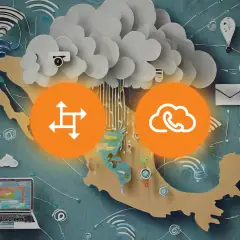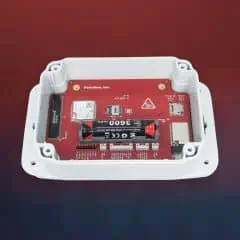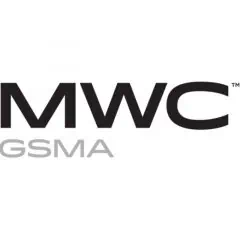Transcription of call recordings
You can now use AI-driven speech-to-text services to provide your customers with automated transcriptions for call recordings. This feature is particularly useful for cloud PBX and call center customers who wish to save time when reviewing and noting important details from lengthy conversations.
Once a call is completed and the recording is ready, the conversation will be automatically transcribed by a speech-to-text service and made available for download on the PortaBilling web UI. In the future, transcription downloads will also be available on the CloudPBX Self-Care Portal. Additionally, you can use the PortaBilling API to integrate this functionality into self-care portals you have developed in-house or by a third party.
It is possible to monetize this service by creating an add-on subscription option with speech-to-text enabled.
The integration uses the Add-on Mart to potentially access a variety of speech-to-text services. Currently, the first available module is for the OpenAI Whisper service and supports all major languages. If you would like to integrate with your preferred speech-to-text transcription service, contact our support team. To monetize your own integration via the Add-on Mart, contact our sales team.
What’s improved?
Extra revenue source
Offer transcription service for call recordings to your customers for a subscription fee.
Better customer service
End users can access important call information in a text format for quick analysis.
Find more details here.
Flexible configuration for number portability lookups
When handling outbound calls and SMS from your subscribers, it’s important to check if the destination number has been ported to another operator. This ensures correct routing and charging at the correct rate, and prevents additional termination costs for sending a call or SMS to an operator that no longer services the number. However, utilizing third-party providers such as Telnyx that maintain ported number databases comes with a cost for each lookup. With MR114, a new framework for number portability lookups has been implemented, enabling you to optimize the associated costs.
The new framework allows you either to use Telnyx out-of-the-box for both voice calls and SMS or to add your preferred number portability service, such as your local provider, if it uses the ENUM (Telephone Number Mapping) protocol. You can also customize lookup handling for different environments. For instance, you can restrict paid lookups with a third-party provider to environments under your operation, such as 1 and 2, while allowing partners renting environments 3 and 4 to customize their settings independently. Additionally, for cost savings, it’s possible to set up caching and even to use the lookup results across environments.
Finally, you can configure least-cost number portability lookup within an environment based on the destination number. For example, if “ABC” offers cheaper lookups for European numbers while “XYZ” provides cheaper lookups for North American numbers, you can configure the system to use each provider respectively, thereby reducing costs on number lookups.
What’s improved?
Route SMS correctly
Route not only voice calls but also SMS based on up-to-date information from a preferred number portability provider.
Save on number portability lookups
Tailor number portability lookups with third-party providers to optimize cost-effectiveness.
Find more details here.
Integration with WTL (Wireless Technology Labs)
PortaBilling is now integrated with the WTL (Wireless Technology Labs) mobile core infrastructure. WTL specializes in providing mobile core and small cell solutions for MVNOs. This integration allows mobile operators using WTL solutions to streamline the provisioning of subscriber data into the mobile network and enable real-time charging for internet access, voice calls, and SMS.
What’s improved?
Launch services with WTL
MVNOs/MVNEs can launch services using WTL’s flexible solutions.
Find more details here.
Setting a longer storage period for payment data
To prevent excessive database growth – which can decrease performance and eventually fill available server disk space – all CDRs, recurring charges, adjustments, payments, and other transactions are periodically cleaned up according to global settings, such as after 2 months. Now, you can set a separate storage period for payment transactions (e-commerce, manual, and automatic credit card payments, as well as refunds), such as storing them for 12 months.
Example
As a service provider, you may have many prepaid customers who occasionally request downloadable receipts for payments older than 2 months. There is no need to store all the transaction data for more than 2 months, as it may occupy disk space and potentially affect PortaSwitch performance. Therefore, you set a storage period of 12 months for payments but keep 2 months for all other transactions (e.g., voice call charges).
What’s improved?
Easier administration
Provide financial information to end users while saving storage space.
Better customer experience
End users can access information on past payments.
Find more details here.
Process call events (connected, queued, etc.) for calls initiated via an auto-dialer app
Apps, such as an auto-dialer, that use the call control API to initiate calls can now receive from PortaSwitch events such as “ringing,” “connected,” “queued,” “terminated,” and so on that relate to the call progress. This real-time information about the state of each call can be used to fine-tune the auto-dialing process, allowing call centers to optimize outbound call campaigns.
Example
Say a call center uses an auto-dialer app to call prospects automatically. When Mary, a call center admin, starts an outbound call campaign via the app’s UI, the app dials automatically and connects answering prospects with available agents. Mary can see real-time call events like “answered,” “declined,” “queued,” or “connected to agent.” If there are too many “queued” calls due to an agent shortage, the app automatically pauses dialing. It also redials prospects who do not answer initially. After the campaign, Mary analyzes statistics, such as the percentage of answered calls not connected to an agent, to optimize the app settings and campaign strategy.
What’s improved?
Develop an advanced auto-dialer app
Implement advanced logic for processing calls via an auto-dialer app.
Better service for call centers
Call centers can optimize the performance of outbound call campaigns.
Find more details here.
Add account identification to the P-Charge-Info SIP header
PortaSwitch now enables the relay of user identification to network equipment, such as a Session Border Controller (SBC), when sending outbound calls. By including an account ID in the P-Charge-Info SIP header of outgoing INVITE requests, it allows for precise data analysis and accurate user identification. For instance, you can compare PortaSwitch and SBC CDRs to prevent “rogue” traffic, such as calls routed through the SBC to other vendors bypassing PortaSwitch without customers being charged.
What’s improved?
Avoid revenue loss
Detect potential revenue loss by reconciling CDRs.
Find more details here.
Seamless transmission of audio streams using the Opus codec
PortaSwitch now ensures seamless audio transmission even when call parties use the Opus codec with different sampling frequencies. Alongside the codec conversion, such as changing Opus to g729 for compatibility with traditional VoIP devices like IP phones and PSTN gateways, PortaSwitch can also adjust the sampling frequency for the Opus codec. This flexibility enables smooth call processing between various WebRTC clients that use the Opus codec. For instance, this ensures smooth communication between a third-party WebRTC app operating at the standard 8 kHz frequency and PortaPhone set at 48 kHz for high audio quality.
What’s improved?
Better customer experience
Customers who use PortaPhone or other WebRTC apps supporting the Opus codec can seamlessly interconnect with other parties.
Find more details here.
Ability to set sale discounts in percentage for commitments
With MR114, it’s now possible to set a relative sale discount for commitments as an alternative to a fixed discount value. This enhancement allows for a more accurate reflection of deals with end users; for instance, an admin can now define the agreed sale discount either in a fixed monetary amount (e.g., $5) or as a percentage (e.g., 5%).
Example
Owl Telecom’s sales manager offers John Smith, their new customer, an additional 5% discount on the subscription fee for the first three months if he signs up for a 12-month commitment. John agrees, and the sales manager sets the 5% sale discount when assigning the commitment to John’s account.
What’s improved?
Easier administration
There is no need for admins to manually calculate a sale discount when assigning a commitment.
Find more details here.
Improved clarity for invoices under review
Admins may need to reissue invoices during the review process if there’s a need to recalculate per-service amounts, such as when late xDR imports occur. Now, once an admin initiates the reissue process, they can see the corresponding invoices with the status “Being reissued.” During this time, the invoices become unavailable for download, and attributes such as the issue date, due date, period total, paid amount, and outstanding amount are temporarily hidden.
What’s improved?
Easier administration
Better clarity and control during the invoice reissue process for admins.
Find more details here.


















